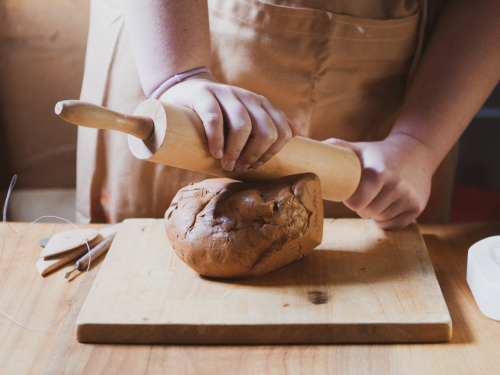
BEFORE YOU START
WEDGE YOUR CLAY
Creating with clay can be a test of resilience it can take a lot of experimenting, practice, trial and error to get the outcome you want.
To ensure you achieve your intended results, the best process you can do before you start building is wedging the clay. Wedging the clay pushes any little air pockets that in the clay out.
Air pockets may cause cracks or result in your clay vessel exploding during the firing process. Wedging the clay also works it into a lovely consistency to hand build with. This process should be done with new clay, fresh from the bag and most definitely with previous worked clay.
There are a few ways you can wedge clay, in the video I use the rams head technique.

JOINING PIECES TOGETHER

SLURRY AKA SLIP OR CLAY GLUE
All you need to make your slurry is the following
- Keep all dry and wet scraps
- Equal amount of water
- Combine and stir till smooth consistency of thick custard
- Store in air tight container
Before you know it, you will have sooo much slurry you’ll run out of containers to store it. Thats ok, you can reclaim clay, meaning you are taking it from this thick custard constancy to the original solid piece you started using, ready and suitable to create more clay vessels from.
All you need to do is tip it on to a flat surface to allow the moisture to come out of the clay, once you are able to handle it, begin with the wedging process again.
JOINING PIECES TOGETHER
CROSS HATCH AND ATTACH
When joining any two pieces of clay together, it’s important that you cross hatch and attach them together as seen in the clip.
- Cross hatch along the two edges/sides where you want them to join
- Apply a the slurry to one side of the join
- Wiggle the pieces together till you feel them join
- Clean the excess slurry and lines of the join
- The pieces should hold together and not come away easily
Make sure your clay is firm, like leather so it holds its shape. When you are applying slurry you adding moisture to the clay and this can impact the integrity of the structure.



